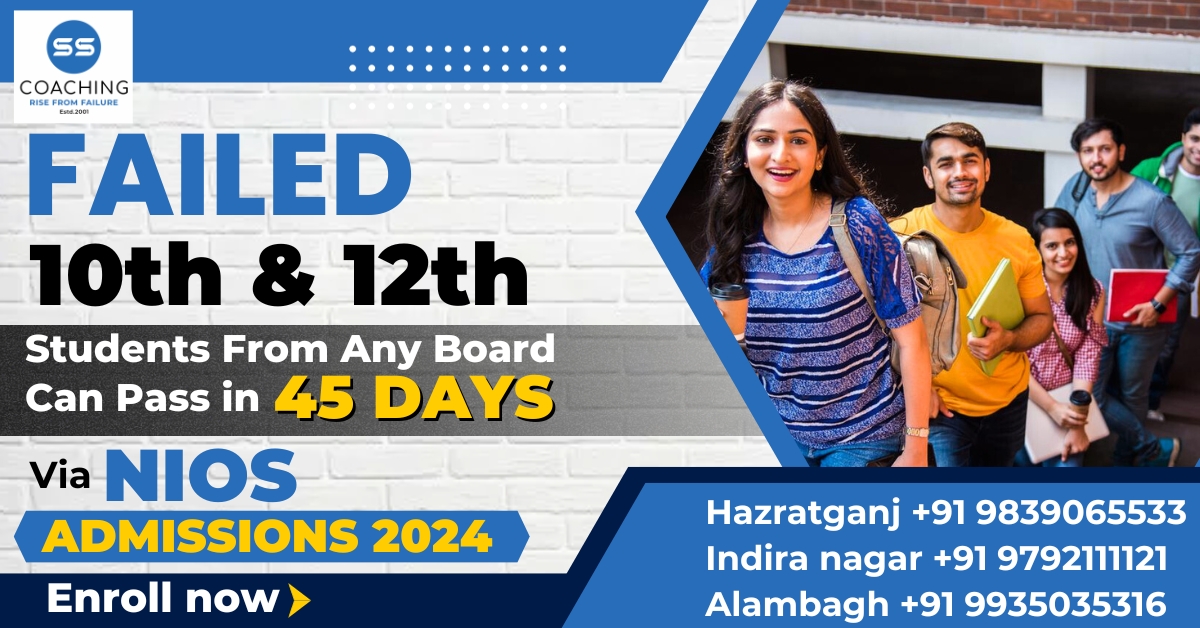Difference between Open and Distance Education
Before learning, you must know what Open Schooling and Distance Learning are. Many times, students use these terms interchangeably, but is that true? Can we use one term on behalf of the other, or should we draw a line between Open Schooling and Distance Learning, noting the difference between open and distance education and all other related terms like distance learning degrees, distance courses, and online and distance learning?

What is Distance Learning?
Distance learning Definition: Distance learning is a broad term encompassing various methods of education where students and teachers are geographically separated. It allows you to learn at your own pace and convenience, using study materials, online resources, and occasional in-person sessions. Examples include programs offered by IGNOU (Indira Gandhi National Open University) and state open universities.
What is Open Schooling?
Open schooling Definition: Open schooling refers to a flexible and inclusive educational framework that allows learners to pursue their education outside the traditional brick-and-mortar school setup. Open Schooling caters to individuals who, for various reasons, are unable to attend regular schools.
Although the terms are often used interchangeably, there are important differences. Open learning is an umbrella term for any scheme of education or training that seeks to systematically remove barriers to learning, whether concerned with age, time, place, or space. With open learning, individuals take responsibility for what they learn, how they learn, where they learn, how quickly they learn, who helps them, and when they have their learning assessed.
Distance learning, on the other hand, is one particular form of open learning in which tutors and learners are separated by geographical distance.
This is sometimes called a home study or correspondence course. Many modes of communication are used for distance learning, not just postal correspondence.
Most of us use distance learning techniques in our daily lives: we read books and newspapers, watch programs on television, and request information over the telephone. These are all learning experiences that 'educate' in the broadest sense.
Open Schooling
Open schooling is a system free of regular school attendance and time-bound programs. It is for those people who cannot attend regular school due to various reasons and now want to complete their education in 10th or 12th regardless of age and other reasons.
It provides the following facilities that a regular school does not have:
1. Flexibility in choosing a program independent of your age.
2. Flexibility of not attending classes.
3. Flexibility of on-demand exams (You can give exams when you are ready).
4. Flexibility in the time frame (You can complete a 1-year program in 4-6 years if necessary).
At the national level, we have the NIOS Board with regional centers at the state level.
NIOS Board offers the following courses:
- Open Basic Education Programme, which includes:
- OBE 'A' Level Course—Equivalent to class III
- OBE 'B' Level Course—Equivalent to class V
- OBE 'C' Level Course—Equivalent to class VIII
- Secondary Course—Equivalent to class X
- Senior Secondary Course—Equivalent to class XII
- Vocational Education Courses
- Life Enrichment Programmes
Students often consider open schooling and distance learning as the same concept, but there is a vast difference between the two.
Distance education refers to all forms of education that take place through communication means like online learning or correspondence, for which you don't have to be present in a particular location for classes.
Open education usually refers to education available to anyone, regardless of student qualifications. Open school, for example, is usually open to anyone who wants to pursue their education from home without attending regular classes.
Distance education is approached in various ways, with the more popular formats being print, audio, video, broadcast radio, television, and of course, computers and the Internet. It is characterized by the separation of geographic distance and time.
Open learning is defined as a method of learning that allows learners flexibility and choice over what, when, at what pace, where, and how they learn. Open learning (NIOS) tends to be delivered via distance education that is characterized by separation of geographic distance and time.
Distance Learning Education
Distance learning has evolved greatly since the days of correspondence learning in which students would receive course materials including textbooks and other materials through the mail. Students would then work at their own pace, finishing the course according to their work and life schedule. Although correspondence courses still exist, they are quickly being replaced by online courses, which offer instruction from teachers, interaction with other students, and a forum for feedback. Distance education refers to all forms of education that take place through communication means like online learning or correspondence, for which you don't have to be present in a particular location for classes.
There are several advantages to the new formats of distance learning, such as making permanent professional contacts, greater teacher support, and a multimedia educational experience. With the advent and improvements in computer, digital, and Internet technology, the shift from the traditional classroom experience to online or distance learning seems natural. This is especially true for programs that require large amounts of reading and written assignments, such as business administration, human resources management, and accounting.
With open schedule online courses, students are allotted the greatest amount of freedom. This is an asynchronous form of learning in which students are provided Internet-based textbooks, mailing lists, email, and bulletin boards to complete their coursework. At the beginning of classes, students are provided with deadlines but are allowed to work at their own pace as long as the work is turned in by the deadline. This type of learning is great for students who work well independently and those who do not procrastinate.
SS Coaching is NIOS Center Lucknow helps students get complete information about NIOS (National Institute of Open Schooling) with coaching classes that prepare students for clearing NIOS exams, syllabus, and tuition for 10th and 12th students of NIOS Board by qualified staff and trainers with decades of experience in the NIOS curriculum. SS Coaching, the only NIOS Center Lucknow also helps with form filling for NIOS admission in each stream (stream 1, stream 2, stream 3 & 4) of NIOS Board for 10th and 12th admission seekers. If you are seeking NIOS admission, SS Coaching can guide you with the NIOS Admission process for all streams of the NIOS Board.
Both Open Schooling and Distance Education have their own strengths and limitations, and they cater to different types of learners with diverse needs and preferences.
FAQs
1. Can NIOS be done online?
Yes, NIOS (National Institute of Open Schooling) offers online admission, study material, and exams for its students. You can apply for NIOS online admission through their official website by filling out the application form and submitting the necessary documents.
2. What is the meaning of open schooling?
Open schooling is an educational system providing an alternative to traditional brick-and-mortar schools. It is designed for students who cannot attend regular school due to various reasons such as financial constraints, physical disabilities, work commitments, or other personal circumstances.
3. Is distance learning as effective?
Distance learning can be as effective as traditional classroom-based learning, depending on the quality of instructional design, teacher and student engagement, and motivation.
4. What is the main advantage of distance learning?
The main advantage of distance learning is flexibility. Students can study at their own pace, on their own schedule, and from any location with an internet connection.
5. What is the difference between open school and regular school?
The main difference is the mode of learning and the flexibility of the education system. Regular schools require students to attend classes at a fixed location and time, with a curriculum designed to be completed within a certain timeframe. In contrast, open schooling allows students to learn at their own pace and from any location.
6. What is the purpose of distance education?
The purpose of distance education is to provide access to education and training for learners who are separated by geographical distance from traditional educational institutions. Distance education aims to overcome barriers of time, space, and place, making it easier for learners to access education.
7. Difference between open and distance education?
Open education focuses on free, self-paced learning without formal instruction, while distance education involves structured courses with set timelines and uses technology for teaching students separated geographically.
8. Tell me the difference between Distance Learning vs Online Learning?
Distance learning encompasses various education methods for geographically separated students and teachers, including mail and broadcast. But in Online learning specifically uses the internet for real-time education or self-paced instruction and student-teacher interaction via online means.
9. Difference between Open University and Distance Education?
The Main difference between Open University and Distance Education is that Open University offers flexible, inclusive education accessible to anyone, often with open admissions policies. Distance education delivers structured courses remotely, utilizing technology to teach students who are not physically present on campus.


